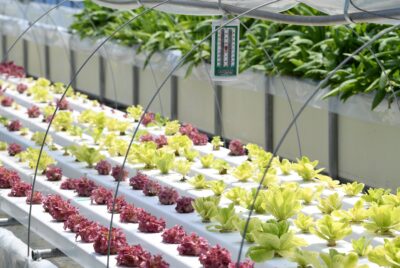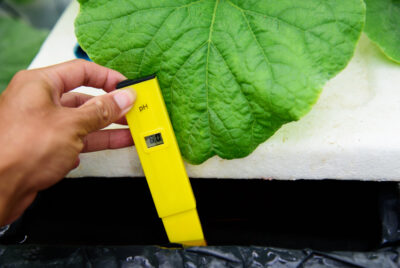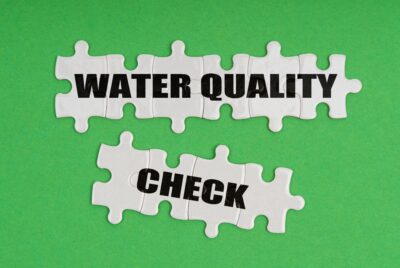Fluorescent Grow Light
We may earn a commision from purchases made using our links. Please see our disclosure to learn more.
T5/T8 Grow LightsFluorescent Grow Light: An Enthusiast’s Guide.
Hey there! If you’re like me, an avid indoor gardener or plant enthusiast, you’ve probably wondered about or even considered using a fluorescent grow light. So, what’s the reason behind the buzz? Let me illuminate this for you!
Why Choose Fluorescent Grow Lights?
Firstly, it’s worth noting that fluorescent lights aren’t just for office buildings. They indeed offer a wide spectrum of benefits for indoor plants.
Benefits of Fluorescent Lighting
Here’s the deal: plants genuinely cherish these lights! Fluorescent lights, for starters, provide a broad spectrum of light that closely resembles the sun. Moreover, they’re energy-efficient, reasonably priced, and emit minimal heat. Have you ever touched a scalding light bulb? With fluorescents, thankfully, that’s not a concern.
Comparing with Other Light Types
Over the years, I’ve experimented with various light systems – LED, HID, and more. While each has its own set of advantages, fluorescent lights, in particular, stand out, especially for seedlings and plants that don’t demand a lot of light. Additionally, they’re gentler than high-intensity lights, making them perfect for fragile plants.
Understanding the Science Behind It
Before diving deeper, let’s first shed some light on the science behind these tubes.
How a Fluorescent Grow Light Works
Imagine, for a moment, taking sunlight, condensing it into a tube, and then controlling its intensity. That’s somewhat how a fluorescent bulb operates. Inside, it contains a bit of mercury gas. When electricity flows through, this gas, surprisingly, produces ultraviolet (UV) light. But wait! We can’t see UV, right? That’s true! That’s where the bulb’s phosphorescent coating comes into play, transforming UV into visible light.
Impact on Plant Growth
Between you and me, plants and fluorescent lights share a remarkable bond. The emitted light significantly promotes photosynthesis, resulting in bigger leaves, more robust stems, and more vibrant flowers. Growing hydroponically will make these gains even greater.
Different Types of Fluorescent Grow Lights
There’s more than just one variant to consider. So, let’s delve into the different members of the fluorescent family.
T5 Grow Lights
These bulbs, by and large, are the superstars of the fluorescent realm. T5s are notably slender, more efficient, and brighter. If you’re serious about indoor gardening, these should be your go-to. I personally use these in my hydroponic propagation system when growing seedlings.
CFL (Compact Fluorescent Lamp)
CFLs, on the other hand, are those curly bulbs you often see in homes. They’re perfect for small spaces or individual plants. Think of them as the multi-tool of grow lights.
Setting Up Your Fluorescent Grow Light System
Eager to begin? Here’s a step-by-step guide to ensure your plants receive optimal light.
Choosing the Right Fixture
First and foremost, the fixture you pick should match the size and number of bulbs you have in mind. If possible, opt for one with a reflective hood to maximize light distribution.
Positioning and Distance
It’s crucial to keep the lights close, but not excessively so. Generally, maintaining a distance of 4-8 inches above the plant is ideal. And as your plant grows, remember to adjust accordingly.
Maintaining and Troubleshooting Your T5/T8 Grow Lights
Much like any other gadget, occasional maintenance is paramount.
Lifespan and Replacement
Most fluorescent bulbs, as a rule of thumb, last around 10,000 hours. If you observe the ends darkening, that’s a clear sign they’re due for a swap.
Common Problems and Solutions
In case your light starts to flicker, it might be due to a loose bulb or a malfunctioning ballast. Therefore, always ensure everything is firmly in place.
Making the Most of a Fluorescent Grow Light
Finally, to wrap things up, let’s discuss how to optimize your plant’s light exposure!
Optimizing Light Cycles
Different plants have varied light needs. However, a majority flourish with 12-16 hours of fluorescent light. Investing in a timer can help keep the cycles consistent.
Pairing with Other Light Systems
Ever thought of mixing things up? Combining fluorescents with other light types, like LEDs, can provide a fuller spectrum coverage. Don’t forget to use the correct hydroponic instruments and controllers for each system.
Conclusion
In conclusion, if you’re wondering whether to embrace the world of fluorescent grow lights, I’d say go for it! They’re versatile, efficient, and incredibly plant-friendly. Wishing you bountiful growth!
FAQs
Can I use regular fluorescent tubes for plants?
While plants can grow under regular tubes, specialized grow lights offer a spectrum tailored specifically for plant needs.
Are fluorescent lights safe for all plants?
Generally speaking, yes! But always check your specific plant’s light requirements just to be safe.
How often should I replace my fluorescent bulbs?
Aim to replace them every 10,000 hours or when you detect darkening at the ends.
Can fluorescent lights cause plant burn?
Due to their low heat emission, the risk is minimal. However, monitoring your plants for any signs of distress is always advisable.
Why are my plants leaning towards the light?
It’s a natural instinct for plants to gravitate towards their light source. Regular rotation can ensure even growth.





Comments are closed.